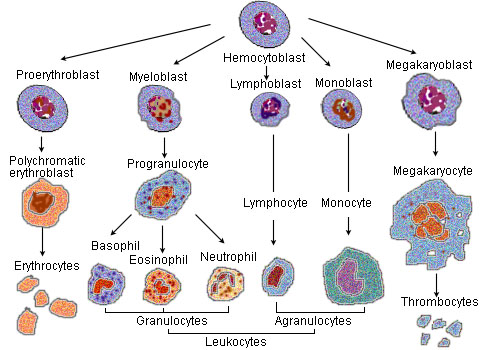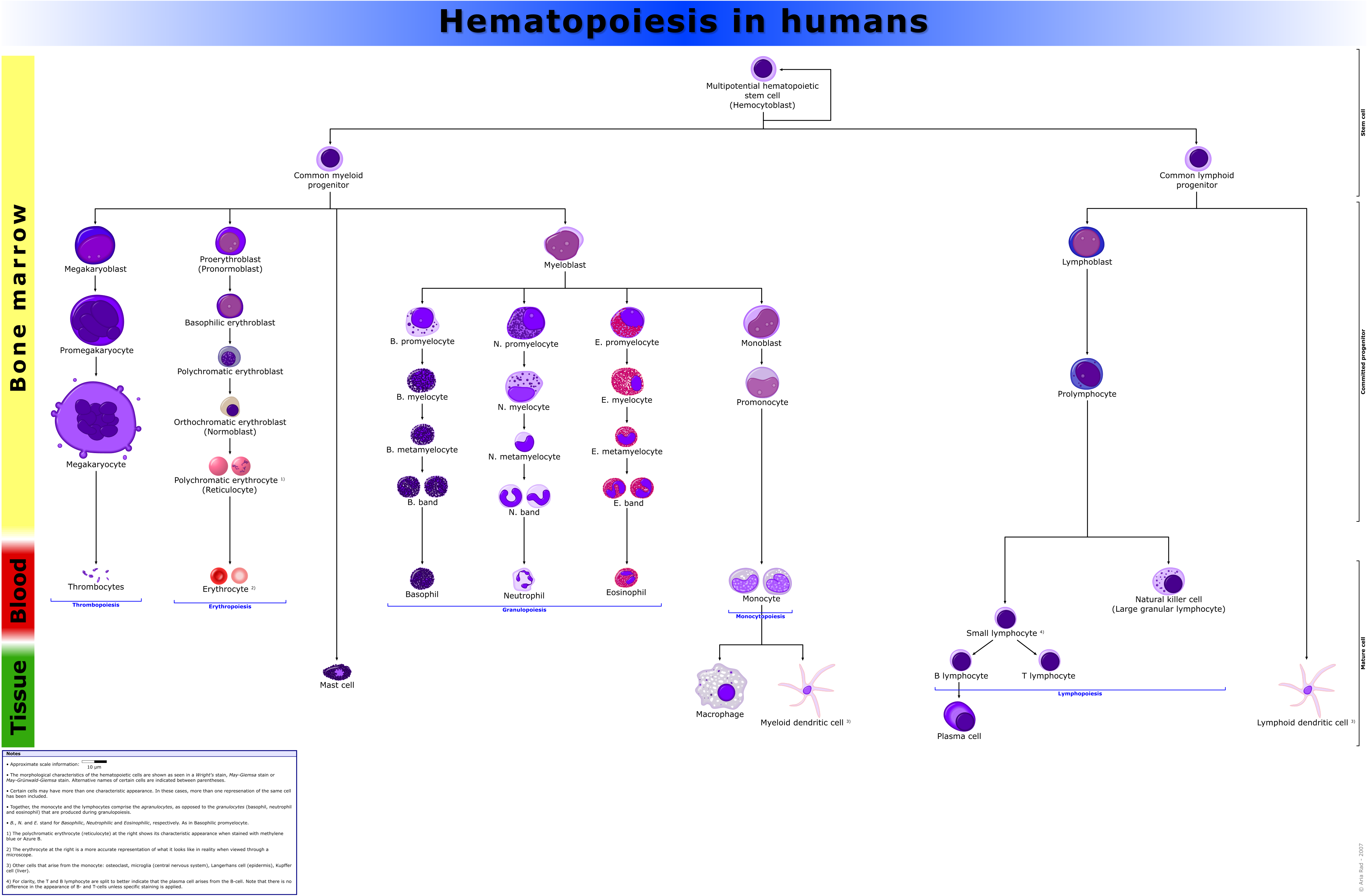Monoblast

|
WikiDoc Resources for Monoblast |
|
Articles |
|---|
|
Most recent articles on Monoblast |
|
Media |
|
Evidence Based Medicine |
|
Clinical Trials |
|
Ongoing Trials on Monoblast at Clinical Trials.gov Clinical Trials on Monoblast at Google
|
|
Guidelines / Policies / Govt |
|
US National Guidelines Clearinghouse on Monoblast
|
|
Books |
|
News |
|
Commentary |
|
Definitions |
|
Patient Resources / Community |
|
Patient resources on Monoblast Discussion groups on Monoblast Directions to Hospitals Treating Monoblast Risk calculators and risk factors for Monoblast
|
|
Healthcare Provider Resources |
|
Causes & Risk Factors for Monoblast |
|
Continuing Medical Education (CME) |
|
International |
|
|
|
Business |
|
Experimental / Informatics |
Editor-In-Chief: C. Michael Gibson, M.S., M.D. [1]
Monoblasts are normally found in bone marrow and do not appear in the normal peripheral blood. They mature into monocytes which in turn develop into macrophages.
Structure
A typical monoblast is about 12 to 20 µm in diameter, has a nuclear to cytoplasm ration of 4:1 to 3:1, and, like most myeloid blasts, has a round to oval nucleus with fine chromatin structure. One to four nucleoli are usually visible. The nucleus can be central or eccentric and it can show evidence of indentation or folding. The cytoplasm is agranular, stains moderately to lightly basophilic, and often has an intensely stained periphery and a prominent perinuclear zone.
Maturation
The monoblast is the first stage of monocyte-macrophage maturation. The developmental stages of the monoblast are: CFU-GM (pluripotential hemopoietic stem cell or hemocytoblast) -> monoblast -> promonocyte -> monocyte-> macrophage.
Additional images
-
Blood cell lineage
-
Hematopoiesis

